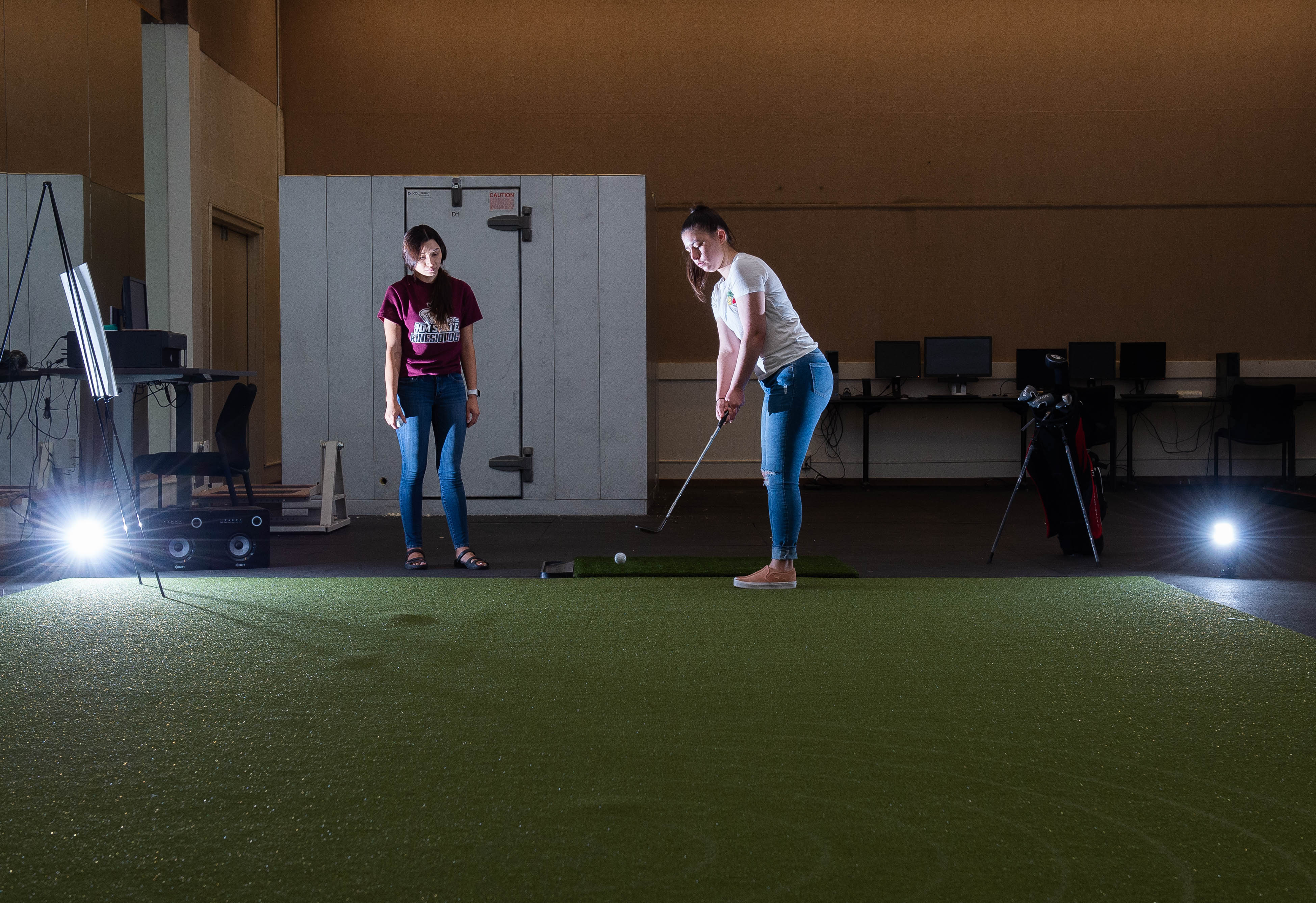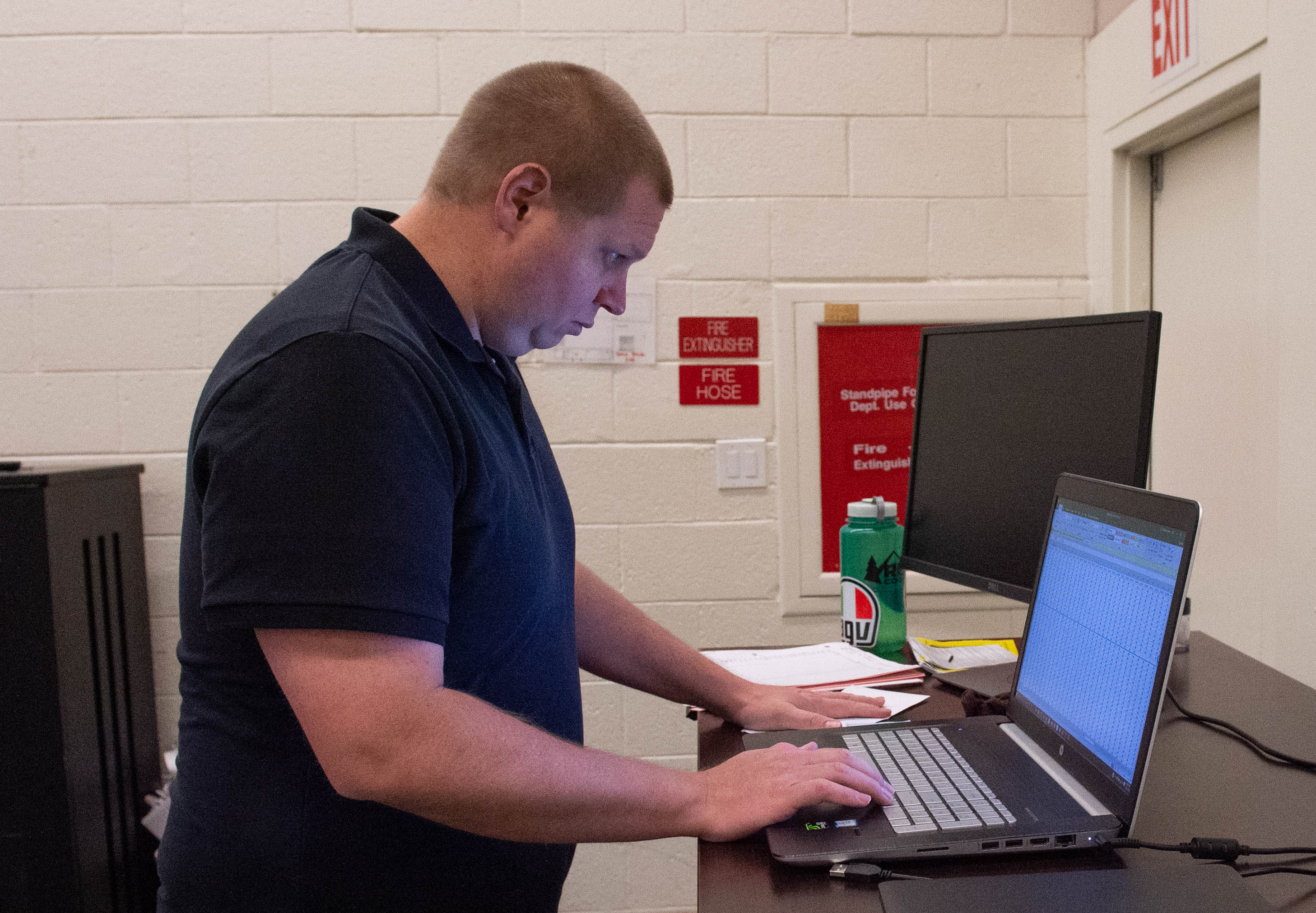NMSU assistant professor studies how internal, external foci affect athletic skills


Looking to improve your golf game? A research study led by an assistant professor at New Mexico State University and an assistant professor at Texas Woman’s University suggests that focusing internally and externally may help novice golfers learning a golf chip shot.
The study, which began more than a year ago, includes data gathered at NMSU with the help of student participants and student research assistants. Christopher Aiken, an assistant professor in the NMSU Department of Kinesiology and Dance, said the study’s purpose is to investigate the effects that attentional focus shifting from preparation to execution has on motor learning.
“What we’re working on right now is how a change of attentional focus impacts how well individuals perform while they’re learning a new task, and also how well they remember that skill for future performances,” Aiken said. “We’re using an internal and external focus of attention. An internal focus of attention directs an individual to focus on their own body movements, which is something that a coach would typically do when they’re working with a little kid. An external focus is focusing on the effects of your movement on the environment. For example, where the ball is landing if you’ve swung a golf club at a ball and hit it.”
Aiken said previous research has shown that an external focus of attention has been beneficial for both performance and learning. The golf study, authored by Aiken and Texas Woman’s University assistant professor Kevin Becker, examines that relationship and how both external and internal foci can enhance learning. Preliminary results suggest that focusing internally during preparation and externally during execution is an effective focus strategy for novices learning a golf chip shot.
“I think Dr. Aiken is doing important research that will help clarify how instructions effect a learner’s skill acquisition,” said Phillip Post, head of the NMSU Kinesiology and Dance department. “I can see this work having applications to allied health fields. Specifically, his work will help provide guidelines for how practitioners can direct their clients’ attention to enhance motor learning, speeding up the recovery process.”
Aiken said he chose to use golf for the study to make participation fun for students.
“They won’t hate coming to the lab for an hour to practice a new skill,” Aiken said. “Golf is just something that I’ve used in the past and it’s kind of an inherently fun task other than having students come in to push buttons on a computer for hours. I like golf so it makes it a little more fun for me to do my work.”
While the first phase of the study focuses on participants with little to no previous experience playing golf, Aiken said the next phase will be to seek out participants who are amateur golfers to see how well they perform assigned tasks. Aiken said he hopes to eventually partner with NMSU’s PGA Golf Management Program and with the Burrell College of Osteopathic Medicine to delve further into other aspects of the golf study.
The study is partially funded by a grant from the NMSU College of Education’s Emerging Scholars initiative, which aims to support and promote innovative research efforts of non-tenured, tenure-track faculty and research faculty.


